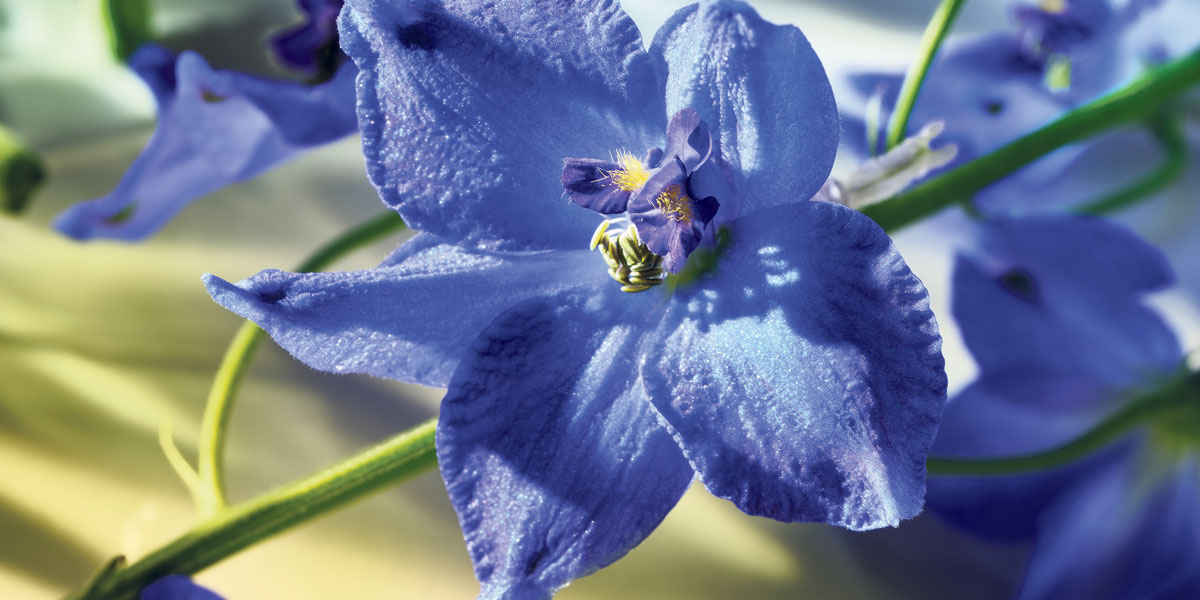
FUJIFILM GFX100 II: a giant leap forwards for the GFX System
Posted on Nov 14, 2023
Professional still-life photographer David Lineton tells us how Fujifilm’s newest 100-megapixel medium format camera delivers the exceptional results that his commercial clients expect
Advertisement feature
Since the launch of its GFX System back in 2016, Fujifilm has been all about bringing medium format photography to those who might not have previously considered or been able to afford it. Its latest iteration is the FUJIFILM GFX100 II, a direct upgrade to 2019’s GFX100 – which at the time was a generational step change of its own, thanks to its generous 100-megapixel resolution.
On sale now, the second-generation GFX100 II keeps that same high resolution while introducing a brand-new back-side illuminated sensor built on the X-Processor 5 platform. The battery grip incorporated with the previous model is now an optional extra, while its eye-level viewfinder boasts an improved 9.44 million dot resolution. Autofocus has been drastically improved, with AF performance now similar to the X-H2, X-H2S, X-T5 and X-S20. There’s also been a 30% increase in dynamic range, and the GFX100 has a new base setting of ISO 80.
Fujifilm’s built-in Film Simulation effects are one of its unique features, and newly added to its arsenal here is Reala Ace – known to most photographers in the west as Fujifilm Reala. It’s described as having a very similar look to Provia film, albeit slightly less saturated.
Given the above, it’s no wonder the GFX100 II is already proving a godsend for pro photographer David Lineton, who shoots still-life photography for a host of big-name brands, and regularly sees his shots reproduced at billboard size.
With a reputation built on quality and detail, even in the six weeks he’s had the new model, Lineton has noticed the upgrade. “Everything about this camera feels more advanced. The EVF is so rich and sharp. I’ve loved Fujifilm Reala, which really boosts the contrast. The Film Simulations are a great way to create a different aesthetic.”
Thanks to the GFX100 II’s new high-speed sensor, maximum shooting speed is 8fps, and AI face and subject detection is quicker and more reliable than before. For those shooting handheld, in-body image stabilisation has likewise been improved to an eight-stop equivalent. Battery life, meanwhile, is good for 540 frames or 90 minutes of continuous video recording.
While capture speed and battery life are less of an issue for Lineton, as he typically works in a controlled environment, he adds: “My clients are always amazed by the quality and detail the GFX System offers. While I always shoot tethered so my clients can see my workflow, the camera’s EVF is my way to ‘sculpt’ my compositions, thanks its super-high resolution. The camera also has a lovely ergonomic feel, which on this latest generation feels even more defined.”
Back to life, back to reality
A clever feature of the GFX100 II, and particularly useful for those working in still-life photography, is a four-image Pixel Shift Multi-Shot mode. This delivers what Fujifilm describes as ‘real colour’ in a combined 100-megapixel image, rather than simply a 400-megapixel equivalent file. The huge resolution also provides oodles of options when it comes to delivering different crops of the same image.
“As a commercial photographer, you’re often required not just to deliver the one image crop, but multiple versions,” Lineton reveals. “The client needs variants that match with all the social media channels. This camera’s sensor allows the client and I to ‘jump around’ an image and fulfil those crops. I might shoot a little wider knowing I need to allow space for all the required crops, while still delivering exceptional detail, which is beneficial to my clients.”
Video now forms a parallel element to Lineton’s photography, and he can see commercial demand for the format is on the increase, especially for shooting accompanying stories for social media. Here, the GFX100 II again comes up trumps, offering users the option of 4K/60p movies or up to 8K video resolution at either 24 or 30p.
With headphone and microphone slots, full-size HDMI output and the ability to add timecode to files via third-party systems like AirGlu or UltraSync Blue, it’s clear the camera is as suited to video as stills.
“The GFX100 II’s 8K at 30fps is exceptional quality, which also allows for cropping, while 60fps at 4K is phenomenal,” marvels Lineton. “In terms of connectivity, USB-C has been excellent and I can use the HDMI port to display a live view of what I’m shooting on a larger monitor, for the client and stylist to see the shots I’m taking in real time. The Ethernet facility allows you to upload straight to the cloud, which is an advantage if the client isn’t on-site and wants to see results quickly.”
Three new GFX100 II-compatible lenses on the Fujifilm roadmap have arrived alongside the new body. The GF55mm f/1.7 R WR is the equivalent of 44mm in the 35mm format, weighs 780g and features a construction comprising 11 rounded diaphragm blades.
Even more notable because they are a first for the system are two much-demanded tilt-shift lenses. These are the GF30mm f/5.6 T/S and GF110mm f/5.6 T/S, with the former coming with its own lens tripod mount. Both are manual-focus lenses, which is the way Lineton prefers to work. The photographer had been shooting with the 110mm when we spoke, noting: “The ability to shoot video with tilt-shift lenses now provides me with so much more flexibility for projects. It also allows me to capture photos in-camera that don’t require me to focus stack as much, and a plethora of options that wouldn’t have been possible without the lens.”
Ultimately, notes Lineton, the new camera and lens combo “reaffirms the GFX System’s place in my kitbag”. Head to the URL below to find out more.
Originally published in Issue 111 of Photography News.
Don’t forget to sign up to receive our newsletter below, and get notified about the new issue, exclusive offers and competitions.
Have you heard The Photography News Podcast? Tune in for news, techniques, advice and much more! Click here to listen for free.




